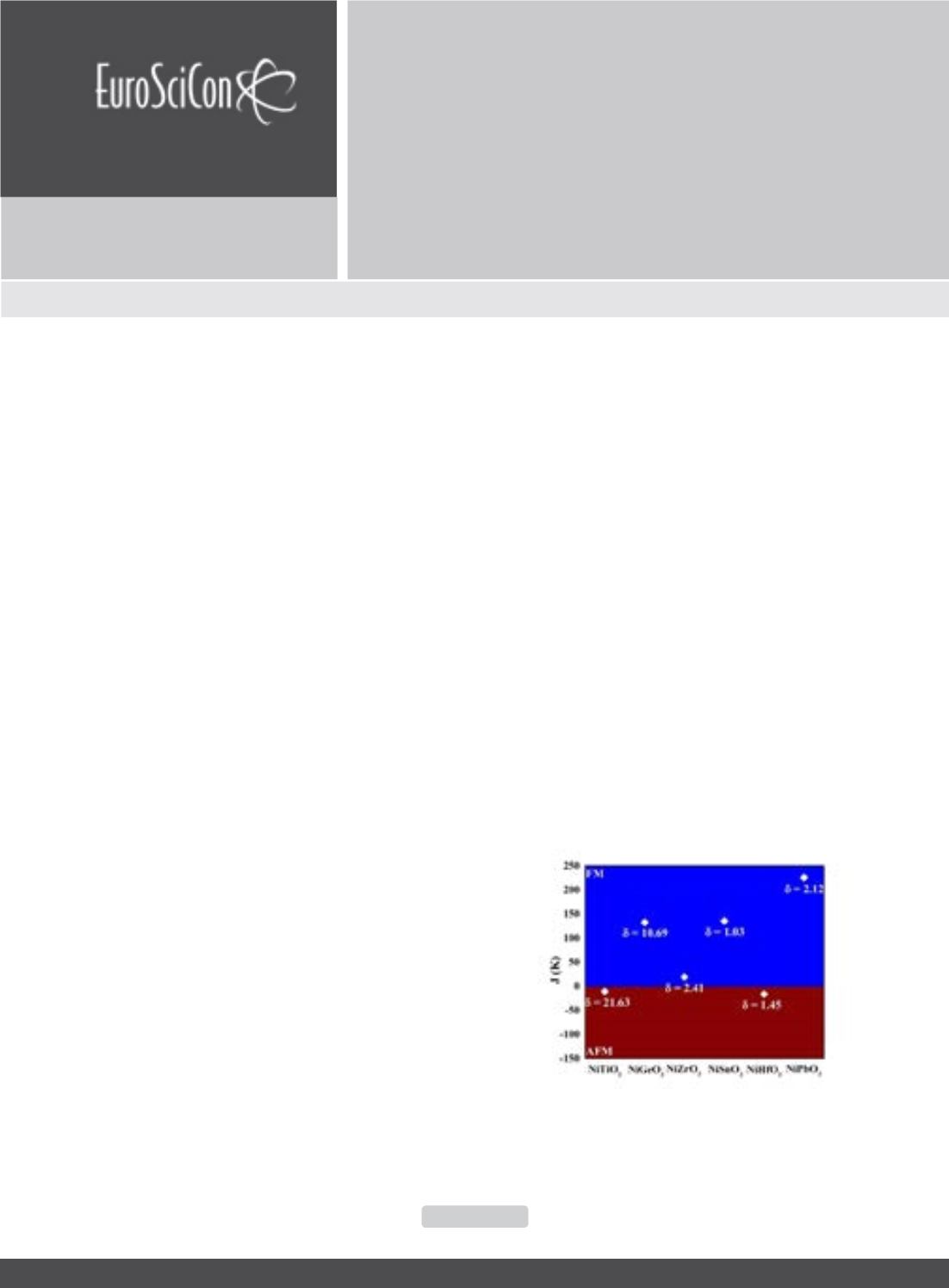

Smart Materials Congress 2019
Nano Research and Applications
ISSN: 2471-9838
Page 27
August 01-02, 2019
Dublin, Ireland
Smart Materials and
Structures
8
th
International Conference on
A DFT investigation on multiferroism and magnetic
coupling in NiBO
3
materials
Sergio Ricardo de Lazaro, Luis Henrique da Silveira Lacerda, Renan Augusto
Pontes Ribeiro
and
Leonardo Konopaski Andreani
State University of Ponta Grossa, Brazil
I
n technological field, the emergent materials are known
as smart materials because present high sensibility and
the ability to adapt to external stimuli. Among the smart
materials stand out the multiferroic (MF) materials. The
multiferroism effect is associated to the coexistence and
coupling between magnetic ordering and ferroelectricity
in the same crystalline phase. The most common
form of multiferroism is called magnetoelectric (ME)
coupling. Some example of MF materials are: BiFeO
3
(BFO) which shows a unique set of electronic, optical,
magnetic and ferroelectric properties and that can be
easily obtained through an epitaxial growing on SrTiO
3
substrates; the present abstract aim to show of new MF
materials based on PbNiO
3
(PNO) materials with R3c
structure considering an occupation in A and B sites.
Therefore, the A sites were occupied by Ni atoms while
the B sites were occupied by Ti, Ge, Zr, Sn and Hf atoms,
respectively. The calculation level was choose as Density
Functional Theory (DFT) at set B3LYP hybrid functional;
employed in CRYSTAL09 software. For all materials
investigated as ferromagnetic (FM) as antiferromagnetic
(AFM) ordering were simulated. For NiTiO, the AFM
ordering was calculated as more stable, in agreement to
experimental and other theoretical results. Similar result
was calculated for NiHfO, i.e., an AFM ordering. However,
the FM ordering was found for NiGeO, NiZrO, NiSnO and
NiPbOmaterials suggesting a relation between structural
regularity and magnetic phase. Along the y axis was
not observed the formation of charge path between the
atomic layers due to proximity between atoms. In case of
z direction, discreet charge paths and charge polarization
were observedwhile the higher polarizationwas exhibited
along x direction once superiors charge paths and high
polarization are formed. Thus, the ferroelectric properties
in R3c materials are preferentially oriented in x direction
in crystalline structure as expected for an anisotropic
ferroelectric. The multiferroic effect was determined
by analysis of magnetic and ferroelectric properties
along x, y and z direction of unit cell; it was noted that
the magnetic property is oriented along z axis, while
the ferroelectric property is oriented preferentially along
x axis. Hence, the coupling between both properties
evidences a multiferroism effect on NiBO
3
(B=Ti, Ge, Zr,
Sn, Hf and Pb) materials.
Sergio Ricardo de Lazaro et al., Nano Res Appl 2019, Volume 05
Figure 1: Magnetic coupling constant (J)
for NiBO3 (B=Ti)
















